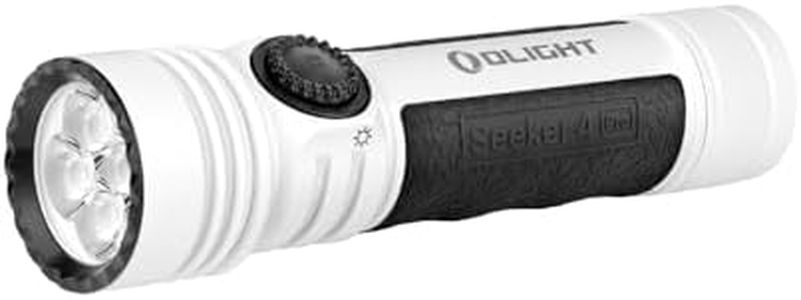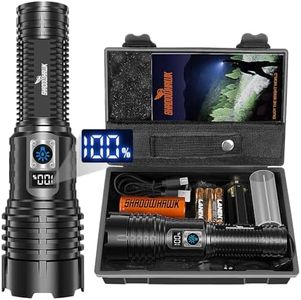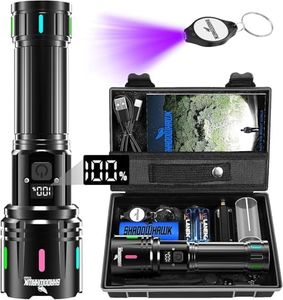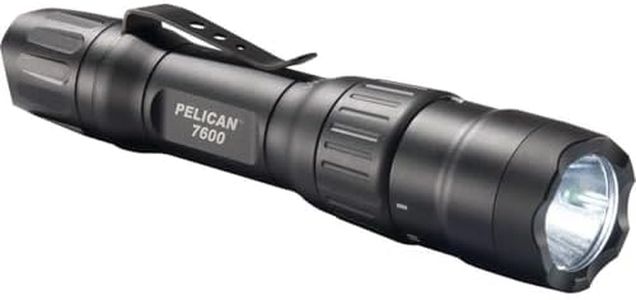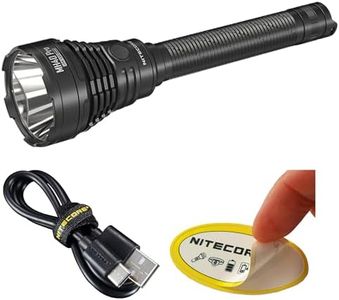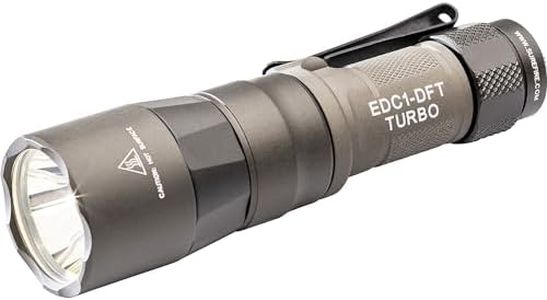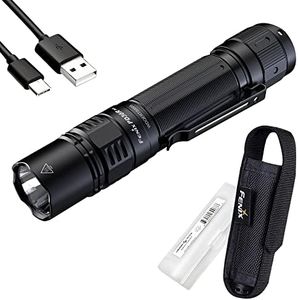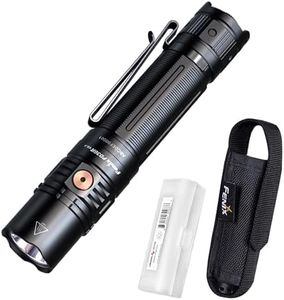We Use CookiesWe use cookies to enhance the security, performance,
functionality and for analytical and promotional activities. By continuing to browse this site you
are agreeing to our privacy policy
10 Best Hunting Flashlights
From leading brands and best sellers available on the web.Buying Guide for the Best Hunting Flashlights
Choosing the right hunting flashlight can greatly enhance your experience, whether you hunt in woodlands, open fields, or mountains. Think of the flashlight as more than just a light source: it's a crucial tool for navigation, tracking, and safety. Before making a choice, consider when, where, and how you'll use the flashlight. Do you need it mostly for finding trails at night, tracking game, or signaling your location? Taking time to clarify your needs will help you pick features that are truly useful for your style of hunting.Brightness (Lumen Output)Brightness, measured in lumens, tells you how much light a flashlight produces. For hunting, brightness needs can vary: lower lumens (100–300) are best for close-range work without blinding yourself or spooking animals, while medium-range (300–800) balances range and battery life for trail finding. Higher outputs (800+) offer powerful illumination for scanning fields or signaling, but often use energy quickly and can produce glare. Think about your typical hunting environment—dense forests need less brightness, while open spaces may benefit from higher outputs.
Beam Distance and TypeBeam distance is how far the flashlight’s beam will travel, and beam type refers to whether the light is a focused spotlight or a wide flood. A long beam distance is key for spotting game at longer ranges or watching trails in big open areas, while a wide flood beam helps you see a broad area up close. Many hunting flashlights offer adjustable beams. Choose a long throw if you hunt open terrain, but if your hunting involves moving through woods or working at campsites, a flood beam or adjustable option is more helpful.
Battery Type and LifeBattery type and life determine how long you can use the flashlight and how convenient it is to power up. Flashlights come with rechargeable batteries or use disposable ones, both with pros and cons. Rechargeable models reduce ongoing costs and are convenient if you can recharge at camp or in your car. Disposable battery flashlights are good if you’re in remote locations for days. Longer battery life means less worry about running out of power mid-hunt, so think about trip length and how much you’ll use it between charges.
Size and WeightThe size and weight of a hunting flashlight affect how easy it is to carry and use. Small, lightweight models are easy to pack and good for quick tasks, but may offer less power or battery life. Medium sizes can offer a good balance. Heavier, larger flashlights might have more features or brighter outputs, but can get tiresome to carry for long periods. Decide how you'll carry the flashlight—pocket, belt, or pack—and how comfortable you need to be while out hunting.
Durability and Water ResistanceDurability and water resistance are crucial if you hunt in challenging weather or rough terrain. Durable flashlights use robust materials like aluminum and feature impact resistance to survive drops. Water resistance is measured by IP ratings: a higher rating means better protection against rain or temporary submersion. For hunting, a good level of water resistance protects your gear from rain, mud, or accidental drops in streams. Think about the typical conditions you’ll face and pick a flashlight that will last in your environment.
Special Modes (Red/Green Light, Strobe, SOS)Some hunting flashlights offer special light modes, such as red or green LEDs, which help preserve your night vision and are less likely to scare animals. Other useful modes include strobe for emergency signaling and SOS patterns for attracting attention if you need help. Decide which light modes are truly useful for your style—if you track animals or navigate in total darkness, colored light options can be very helpful.
